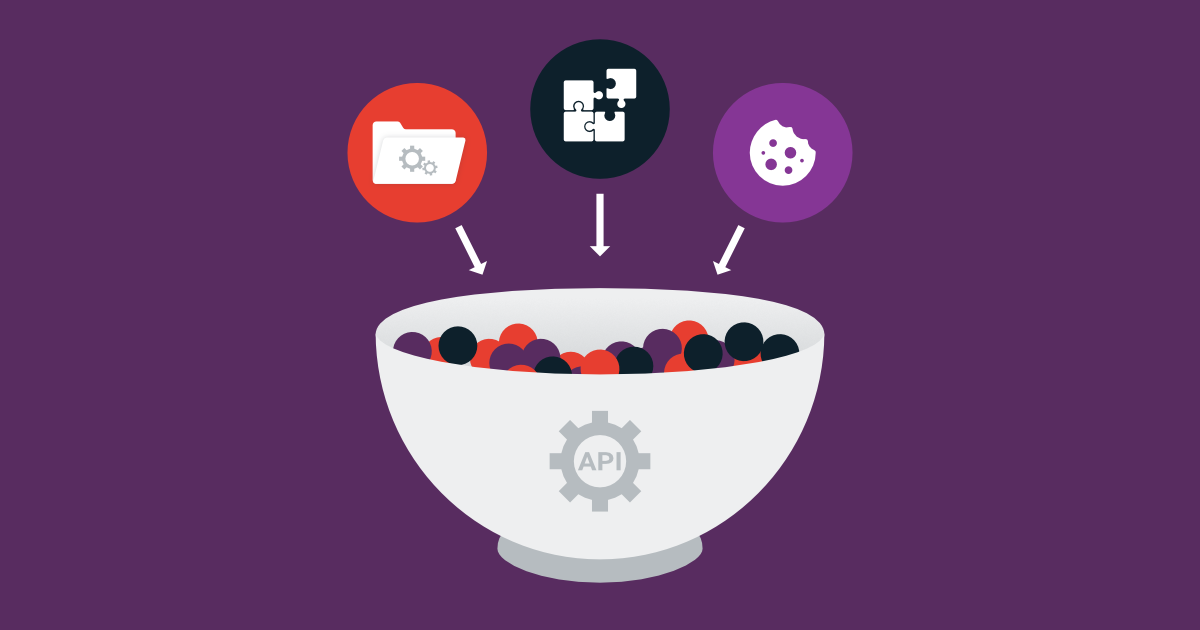Imagine you're at a restaurant, trying to order some food. You have a menu in front of you, and you tell the waiter what you'd like to eat. The waiter takes your order, writes it down, and communicates it to the kitchen. The kitchen prepares your food, and the waiter delivers it to you. This simple interaction between you, the waiter, and the kitchen is a great example of Representational State Transfer, or REST.
The REST architectural style
The REST architectural style is a way of designing network-based software systems that emphasizes scalability, performance, and generality. It is based on a set of constraints that define a standard way of creating, retrieving, updating, and deleting resources over the Internet using HTTP.
Just like in a restaurant, a RESTful system consists of resources that can be manipulated using a set of standard actions. In a restaurant, these resources might include menu items, tables, and orders, and the standard actions might include ordering food, asking for the check, and so on.
In a RESTful system, these resources are represented as URIs, and the standard actions are performed using HTTP methods, such as GET, POST, PUT, and DELETE. Just like in a restaurant, each resource can have its own unique state, and these states can be updated and manipulated using the standard actions.
Finally, just as a menu in a restaurant provides a way for customers to discover and understand the available resources, a RESTful system uses hypermedia, or links within the data, to provide a way for clients to discover and interact with the available resources.
The restaurant analogy provides a simple and intuitive way to understand the basic concepts behind a RESTful system, and it highlights the key principles of separation of concerns, statelessness, and cacheability that make REST such a powerful and widely adopted technology for building Web services and APIs.
The key principles of REST include:
- Separation of Concerns: This principle states that each component in a RESTful system should have a single, well-defined responsibility, and should not be concerned with the details of how other components work. This helps to keep the system modular and maintainable, and makes it easier to update and evolve over time.
- Statelessness: This principle states that each request in a RESTful system should contain all the information necessary to complete the request, and that the server should not maintain any client state between requests. This makes RESTful systems scalable, as the server does not need to store any information about individual clients.
- Cacheability: This principle states that resources in a RESTful system should be marked as cacheable or not cacheable, depending on whether the information they contain is intended to change frequently or not. This allows clients to cache frequently used resources, which can help to improve performance and reduce the load on the server.
From PhD dissertation to global standard: the story of REST
Roy Fielding's 2000 PhD dissertation, "Architectural Styles and the Design of Network-based Software Architectures," is one of the seminal works in the field of computer science, and it remains one of the most widely cited and influential pieces of writing on the topic of Web architecture and software design.
In his dissertation, Fielding presented REST as a set of architectural constraints for designing network-based software systems. He argued that these constraints were essential for achieving desirable properties such as scalability, performance, and generality. Fielding also described the architectural elements of REST, such as resources, representations, and uniform interface, and he provided concrete examples of REST-based systems.
After Roy Fielding's dissertation, REST began to gain wider recognition and adoption in the early 2000s, as more and more developers started using it to build web services and APIs. At first, REST was used primarily for simple, low-level operations, but over time it became clear that REST was capable of much more. As the web grew and became more complex, REST emerged as a powerful tool for building scalable, flexible, and high-performance systems.
One of the key drivers of REST's growth and popularity was the rise of the Internet and the World Wide Web. As the Web became more widespread, developers began to look for new and better ways to build web applications and services that could handle increasing amounts of traffic and data. REST provided a simple and effective solution, and its popularity grew as more and more developers adopted it.
Today, REST is one of the most widely used and well-established architectural styles for building web services and APIs. It's used by companies and organizations of all sizes, in a wide range of industries and applications. REST has also inspired a number of related technologies and approaches, such as the Resource-Oriented Architecture (ROA) and Hypermedia APIs.
REST constraints, why are they important?
The six constraints of Representational State Transfer (REST) are a set of architectural principles that help to define a standard way of building web services and APIs. These constraints ensure that RESTful systems are scalable, flexible, and maintainable, and they also make it easier for different systems and applications to communicate with each other over the Internet.
Here are the six constraints and a brief explanation of why each is important:
- Client-Server Architecture: This constraint separates the client and server components of a system, allowing each to evolve and scale independently. This helps to improve the overall scalability and reliability of the system, and it also makes it easier to develop and maintain the client and server components separately.
- Statelessness: This constraint requires that the server does not store any client context between requests. This helps to improve scalability by reducing the load on the server, and it also makes it easier to maintain and evolve the server-side logic.
- Cacheability: This constraint requires that clients and intermediaries be able to cache responses, so that these can be reused to improve performance. This helps to reduce the load on the server and improve the overall responsiveness of the system.
- Layered System: This constraint allows the system to be composed of multiple layers, such as load balancers, caching proxies, and application servers, which can be added or removed as needed. This helps to improve scalability, reliability, and maintainability, as well as make it easier to change the system to meet changing needs.
- Code on Demand: This constraint allows the server to send executable code to the client, if needed. This helps to improve the overall flexibility of the system, as it allows for dynamic modification of the client behavior.
- Uniform Interface: This constraint requires that the API use a consistent, standard interface for all resources, which makes it easier for clients to interact with the server. This helps to improve the overall simplicity and ease of use of the API.
These six constraints are important because they help to ensure that RESTful systems are scalable, flexible, and maintainable, and they also make it easier for different systems and applications to communicate with each other over the Internet. By following these constraints, developers can build robust, high-performance web services and APIs that are well-suited to the needs of modern, dynamic organizations.
What are RESTful web services?
RESTful web services are a type of web service that use the Representational State Transfer (REST) architectural style to create, retrieve, update, and delete resources over the Internet. A RESTful web service provides a standard, simple, and scalable way of building and consuming web services and APIs.
RESTful web services are often used to build APIs, as they provide a simple and effective way of exchanging data between different systems and applications over the Internet. They are also well-suited to the needs of modern, dynamic organizations, as they allow for rapid and flexible development, easy integration with other systems, and a scalable and reliable infrastructure.
How do RESTful web services work?
RESTful web services work by allowing clients to interact with resources over the Internet using the standard HTTP methods (GET, POST, PUT, and DELETE). Each resource is identified using a unique URI, and the client can perform various operations on the resource by sending HTTP requests to the server.
Here's a simple example of how a RESTful web service might work:
A client sends an HTTP GET request to the server, specifying the URI of the resource it wants to retrieve. For example, a client might send a GET request to "/users/123" to retrieve information about user 123.
The server processes the request and retrieves the requested resource. In this case, the server would retrieve information about user 123 from its database.
The server then returns a representation of the resource to the client. This representation is usually in the form of a JSON or XML document, and it contains the data for the resource. For example, the representation for user 123 might include the user's name, email address, and phone number.
The client can then use the representation to interact with the resource. For example, the client might update the user's information by sending a PUT request to "/users/123" with a new representation of the resource.
The server processes the PUT request, updates the resource in its database, and returns a response to the client. This response might include a status code to indicate the result of the operation, such as 200 OK to indicate that the update was successful.
This simple example illustrates the basic flow of a RESTful web service. By following the constraints of REST, RESTful web services provide a simple, standard, and scalable way of building and consuming web services and APIs. They are flexible, as they allow clients to interact with resources in a variety of ways, and they are scalable, as they allow for easy horizontal scaling by adding more servers to handle increased load.
What is a RESTful API?
A RESTful API is a type of application programming interface (API) that uses the Representational State Transfer (REST) architectural style to allow for the creation, retrieval, update, and deletion of resources over the Internet.
In a RESTful API, resources are the central concept and are identified using unique URIs. The client interacts with these resources using the standard HTTP methods (GET, POST, PUT, and DELETE), and the API uses HTTP status codes to indicate the result of an operation. RESTful APIs rely on the use of hypermedia, or links within the data, to drive the application's behavior.
RESTful APIs are built around the six constraints of REST, which ensure that they are scalable, flexible, and maintainable. These constraints include a client-server architecture, statelessness, cacheability, a layered system, code on demand (optional), and a uniform interface.
RESTful APIs are a popular way to build APIs because they provide a simple and effective way of exchanging data between different systems and applications over the Internet. They are also well-suited to the needs of modern, dynamic organizations, as they allow for rapid and flexible development, easy integration with other systems, and a scalable and reliable infrastructure.
How do RESTful APIs work?
RESTful APIs work by allowing clients to interact with resources over the Internet using the standard HTTP methods (GET, POST, PUT, and DELETE). Each resource is identified using a unique URI, and the client can perform various operations on the resource by sending HTTP requests to the server.
Here's a simple example of how a RESTful API might work:
- Client requests a resource: The client sends an HTTP GET request to the server, specifying the URI of the resource it wants to retrieve. For example, a client might send a GET request to "/users/123" to retrieve information about user 123.
- Server processes the request: The server processes the request and retrieves the requested resource. In this case, the server would retrieve information about user 123 from its database.
- Server returns a representation of the resource: The server then returns a representation of the resource to the client. This representation is usually in the form of a JSON or XML document, and it contains the data for the resource. For example, the representation for user 123 might include the user's name, email address, and phone number.
- Client uses the representation to interact with the resource: The client can then use the representation to interact with the resource. For example, the client might update the user's information by sending a PUT request to "/users/123" with a new representation of the resource.
- Server updates the resource and returns a response: The server processes the PUT request, updates the resource in its database, and returns a response to the client. This response might include a status code to indicate the result of the operation, such as 200 OK to indicate that the update was successful.
This simple example illustrates the basic flow of a RESTful API. By following the constraints of REST, RESTful APIs provide a simple, standard, and scalable way of building and consuming web services and APIs. They are flexible, as they allow clients to interact with resources in a variety of ways, and they are scalable, as they allow for easy horizontal scaling by adding more servers to handle increased load.
You should consider taking advantage of REST
There are several advantages of using Representational State Transfer (REST) as an architectural style for building web services and APIs:
- Scalability: RESTful APIs are designed to be scalable, as they allow for easy horizontal scaling by adding more servers to handle increased load.
- Flexibility: RESTful APIs are flexible, as they allow clients to interact with resources in a variety of ways. This makes them well-suited to the needs of modern, dynamic organizations, as it allows for rapid and flexible development, easy integration with other systems, and a scalable and reliable infrastructure.
- Interoperability: RESTful APIs use standard HTTP methods and return data in standard formats, such as JSON or XML, making them easy to integrate with other systems and applications.
- Performance: RESTful APIs are designed for performance, as they can cache resources, reducing the load on the server, and improve response times for clients.
- Statelessness: RESTful APIs are stateless, meaning that the server does not store any client-specific information, making them more resilient and scalable.
- Simplicity: RESTful APIs have a simple, standard interface that makes them easy to understand and use, reducing the time and effort required to build and consume them.
- Portability: RESTful APIs can be easily ported to different platforms, making them more portable and reusable.
These advantages make REST a popular choice for building web services and APIs, and it is widely used in many industries, including e-commerce, finance, healthcare, and more.
So there you have it – a brief introduction to the wonderful world of Representational State Transfer. But the journey doesn't have to end here! Keep learning about REST, try building your own RESTful API, and see for yourself just how powerful and versatile this architectural style can be.
/discovering-the-power-of-representational-state-transfer-(REST).svg)




